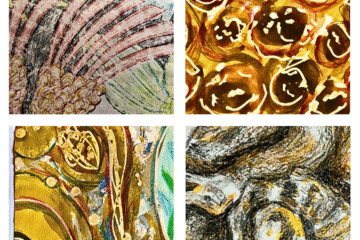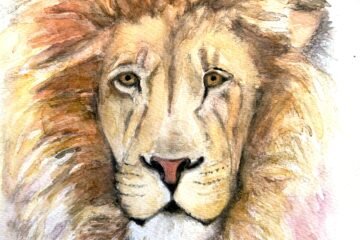With the right perspective, your artwork can be taken to the next level. However, perspective in art is often a subject that causes some difficulty as it is not always fully understood.
In this blog, I will be looking at how to effectively apply linear and aerial perspective with simple applied rules in order to improve the technical and aesthetic qualities of your work.

One Point perspective.
This is the phenomenon where lines appear to converge and meet at one point on the horizon, known as the vanishing point.
The illustrated image here which features a road shows this well as the edges of the road appear to converge into the distance at one central point.
If you look closer at the image, you will also notice that the telegraph line also converges and appears to meet at the same central point.
Royalty free image courtesy of Unsplash..com https://unsplash.com/@21w8y
In summary:
- One point perspective is used to plot the size of objects as they recede in to the distance
- One point perspective involves plotting lines to a central vanishing point on the horizon.
- By using one point perspective, you can accurately ensure that the height and width of objects are correctly plotted to show distance and depth.

If you understand linear perspective, you can achieve accurate artwork without the hassle.
So, when planning your next artwork, start by thinking about the rules of linear perspective. If working from a photograph, try drawing over the image to see if you can find the diverging lines and the vanishing point on the horizon. You can then use this information to draw out the image more accurately.

In this historic painting which features well-observed buildings, you can see that the angle of the tops and bottoms of the windows, buildings, railings and pavement all follow lines which lead to a central point in the middle of the painting.
It is exactly the same principal as the road and telegraph poles from the previous image.
Look carefully at the image, can you find the vanishing point?
Royalty free Image courtesy of Unsplash,,com https://unsplash.com/@birminghammuseumstrust
Aerial Perspective
Aerial, or atmospheric perspective, as it is sometimes known, involves the optical illusion created in landscapes where objects on the horizon appear lighter and bluer. You can clearly see this in the photograph of a landscape illustrated here.
Without getting too sciencey, the reason for this is due to light scattering air molecules diffusing and reflecting light.

Royalty free image courtesy of Unsplash.com https://unsplash.com/@dankpotato_
So, when planning your landscape, cityscape or seascape paintings, ensure that you apply the rules of aerial perspective.

The rules of aerial perspective in summary:
- Distant hills will appear light blue
- As objects recede in to the distance they become increasingly paler in tone
- Objects in the distance have no texture, whereas nearby objects have more texture and darker tones
Look closely at the painting illustrated here. You can see that the artist has correctly applied aerial perspective to create distance and depth in the work. Imagine if the artist had painted the hills darker and larger – that would have been a very confusing scene with no depth!
Royalty free image courtesy of Unsplash.com https://unsplash.com/@davidclode
I hope that you have found this blog interesting and useful and feel more equipped to attempt to use linear and aerial perspective in your own artworks. I would love to hear how you get on with this, so please do write a comment on the website alongside this blog to let me know https://bhretreats.co.uk/blog/
Are you interested in learning more? Why not try one of our landscape courses where we will cover in more detail the rules of perspective and create beautiful and well executed landscape artworks. You will also have an opportunity to work from direct observation drawing and painting the beautiful surrounding scenery here in Herefordshire. Here is the link to view more information about the course https://bhretreats.co.uk/art-retreats/
I hope that you will have fun applying and using perspective in your artwork 🙂
Best wishes,
Sharon Brookes



0 Comments